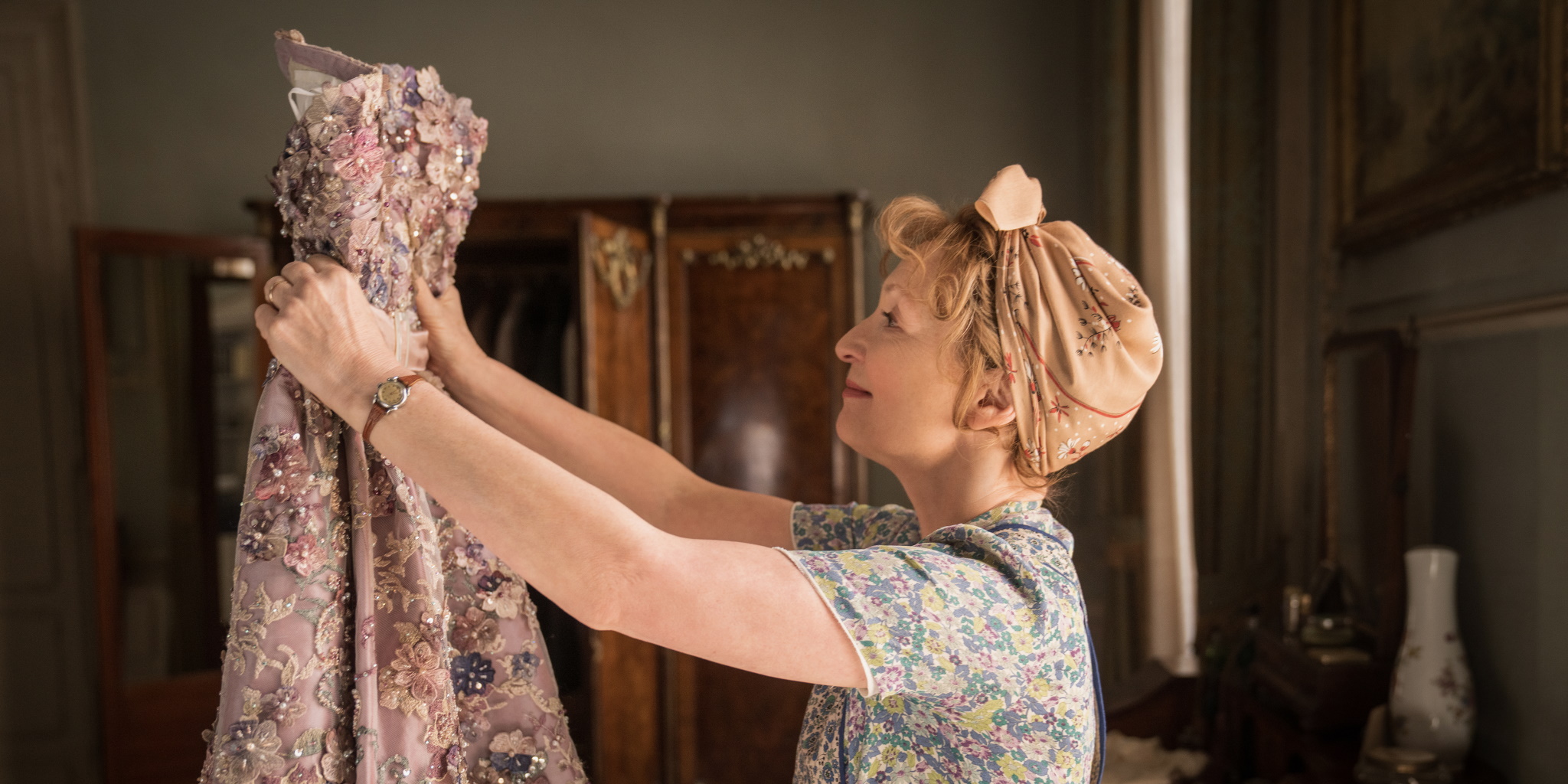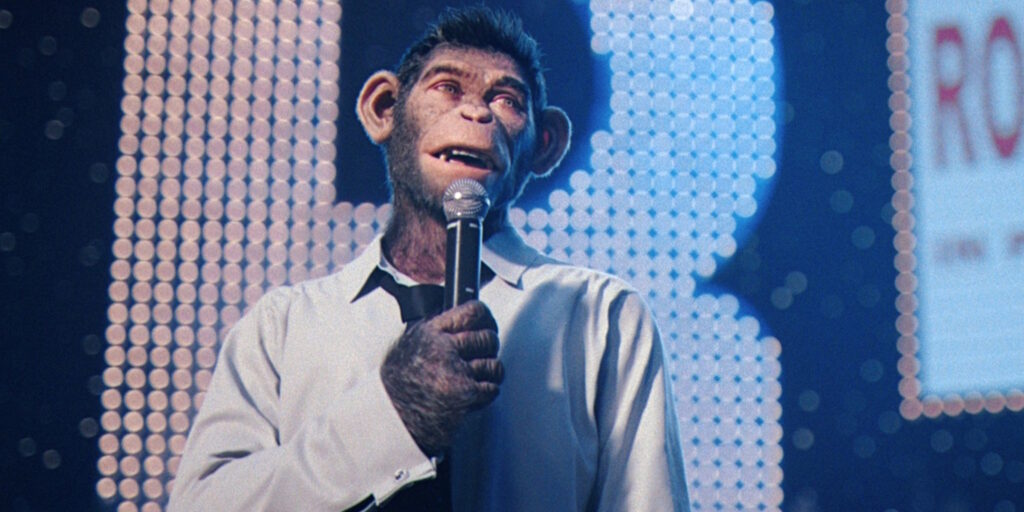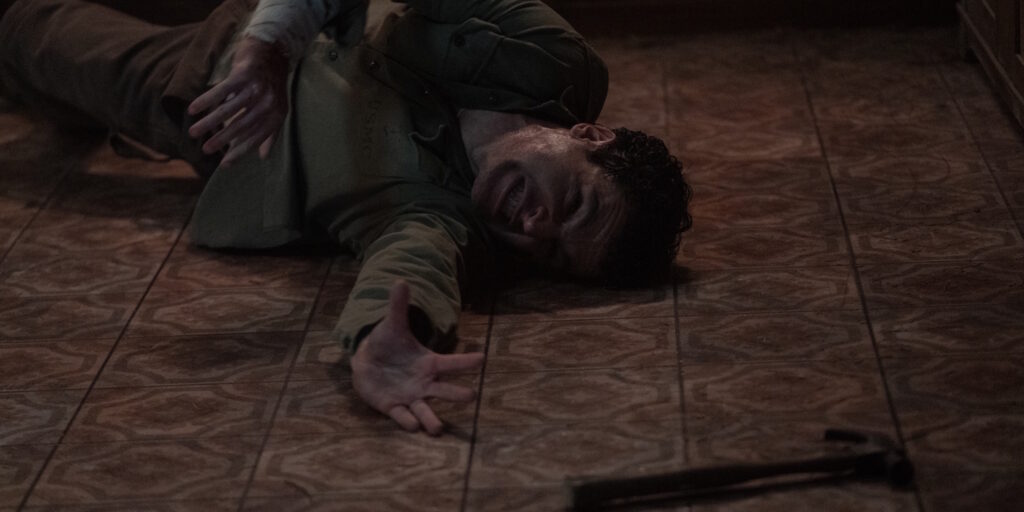[Originally published at Cinema St. Louis’ The Lens.]
Despite all she’s been through and the material comforts she may lack, Ada Harris (Lesley Manville) has clung for dear life to her unflinching optimism. For her, it’s more than a state of mind — it’s a way of life. It is Britain in 1957, and Ada’s husband has been MIA since World War II. Staying put in their tiny London flat, she is undeterred by its gradual descent into decrepitude. She clings to her housekeeping job in the face of her advancing age and increasingly stingy clientele. (The lingering effects of the war’s widespread destruction are still hitting once-wealthy Londoners where it hurts.) Mrs. Harris’ relentless positivity has her convinced this is all only temporary and her long-lost spouse will return from war any day now. It’s not until she tears into the unopened 13-year-old package she’s been carrying all this time that reality hits: Mr. Harris is dead, and he has been dead since 1944.
Grief has a way of being cunning in this way, ensnarling the bereaved in one of its five stages without making it obvious that this is what’s happening. Mrs. Harris is trapped in denial. And she has been for quite a while. It hits her as soon as she sees the contents of the box she once considered a good-luck charm. As long as it remained unopened, she reasoned, her husband lived on. Now that it’s open and reality has bludgeoned her heart, Ada’s steadfast hopefulness faces its greatest threat: the possibility that life might not actually respond all that well to the mantra “Put good in, get good out.” There’s no doubt this is going to take some getting used to. Luckily, as fate would have it, it doesn’t take long for Mrs. Harris to cling to a new material thing: a rich woman’s couture Christian Dior dress, valued at an exorbitant 500 pounds (well north of 2,000 pounds today).
As the title so succinctly states, Mrs. Harris Goes to Paris follows Ada as she heads to France and charmingly disrupts the cutthroat world of high fashion with her cheery attitude. The film plays out more like a series of chapters than an overarching narrative, following Ada’s journey in pursuit of a custom-fitted Dior dress of her own. Manville plays the part with remarkable conviction, elevating what is (in all honesty) a very weak and dramatically ineffectual character to new heights through sheer talent. Personality-wise, Mrs. Harris might as well be the polar opposite of the other midcentury fashion maven she played — Cyril Woodcock in Paul Thomas Anderson’s Phantom Thread (2017) — but Manville effectively embodies the role as if it were her first time touching on this particular time in haute couture history.
An adaptation of the 1957 novel Mrs. ’Arris Goes to Paris by Paul Gallico (the first in a series of four starring the pollyannaish protagonist), the film nonetheless feels tailor-made for today’s current nicecore fixation. From Paddington (2014) to Ted Lasso (2020- ), Best Picture winner CODA (2021) to any one of Michael Schur’s many primetime sitcoms, nicecore is all about maintaining resolute buoyancy while encouraging compassion, kindness, and camaraderie in (relatively harmless, mostly just grouchy) adversaries. That’s Mrs. Harris Goes to Paris through and through. She is a guiding light in the lives of these work-obsessed, wealth-worshiping Dior employees. They all have their hang-ups, but Ada’s big heart has room enough for them all. She’s sort of like Paddington, in a way, but even Paddington has more flaws than Mrs. Harris.
It all boils down to this: Ada Harris has no faults. She is, for all intents and purposes, flawless. She’s not a klutz, she’s not rude or sarcastic (beyond that dry British wit that every Englishman and woman seems to inherit at birth), and she’s certainly not wrestling with any emotional complexities or conflicted feelings. (Again, Paddington causes more mayhem than Mrs. Harris does in this film.) It’s just about the nicest nicecore entry one can find, effectually outlining all the problems with the subgenre in the process. As Mrs. Harris Goes to Paris approaches its conclusion, there’s a lesson Ada must learn: There is, in fact, such a thing as being too kind. It’s a lesson that extends not just to the film’s quartet of screenwriters but to all of nicecore. Unfaltering warmth and indestructible jollity simply aren’t interesting or attention-grabbing on a dramatic level. For a film (or a television show or a novel) to really sink its hooks in, it must first break skin. Mrs. Harris Goes to Paris is thoroughly disinterested in doing that.
Some will see no issue with this, and more power to them. These audiences will have an absolutely wonderful time with this crowd-pleasingly carefree film. No matter where one falls when it comes to nicecore, it’s plain to see that Manville truly is sensational in the title role. It’s a real testament to her talent as an actor that she can pull off diametrically opposed takes on the same basic theme in this and Phantom Thread. For everyone else, there are some fun Spike Lee-esque dolly shots to enjoy, some alluring sets and costumes to appreciate, and some functional supporting performances from Jason Isaacs, Lucas Bravo, and Isabelle Huppert worth sticking around for. Whether one enjoys Mrs. Harris Goes to Paris — with its fairy-tale affability, shallow portrayal of grief, and a feeble exploration of life’s unanswerable question of why terrible things happen to decent people — will depend entirely on their own mood.
Mrs. Harris Goes to Paris opens in select local theaters on Friday, July 15.




